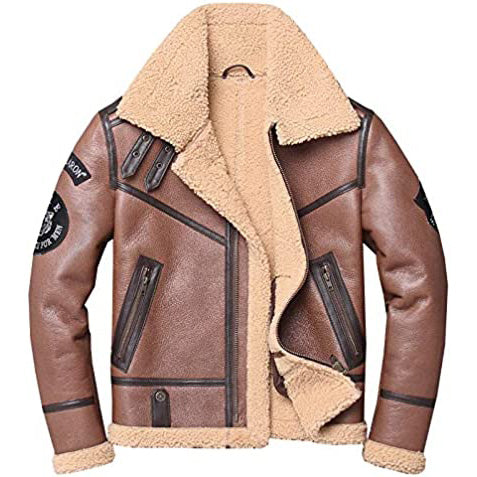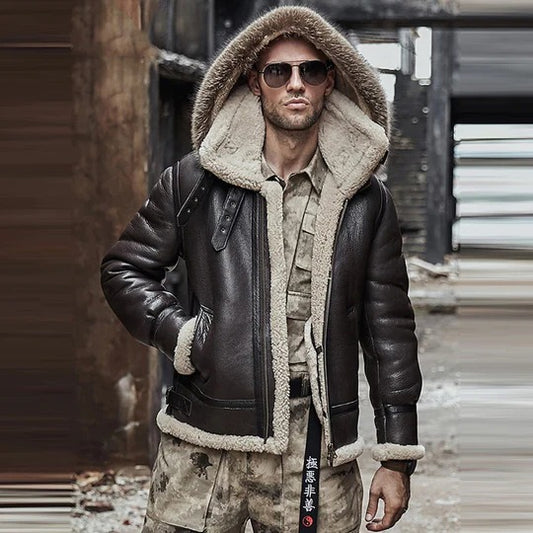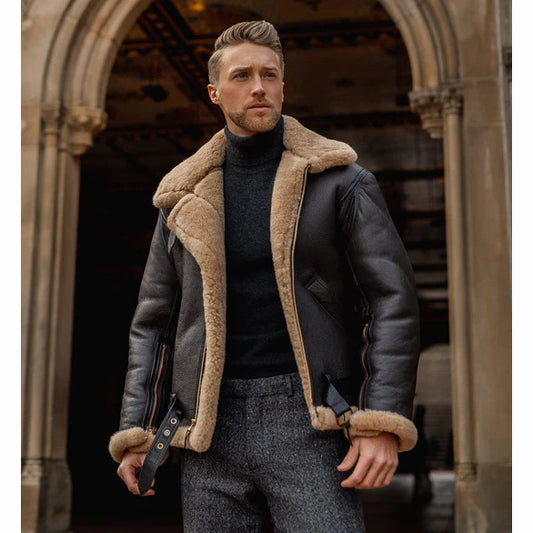Introduction: Understanding Lambskin Leather
Lambskin leather is one of the most luxurious and soft types of leather available. This high-quality material is often used in fashion and accessories, known for its delicate texture, smooth finish, and lightweight feel. But what exactly is lambskin leather, and how does it differ from other types of leather?
In this blog post, we'll explore the properties of lambskin leather, its advantages and disadvantages, where it's commonly used, and how to care for it properly. By the end of this guide, you'll have a comprehensive understanding of why lambskin leather is a premium choice for products like jackets, handbags, and gloves.
What is Lambskin Leather?
Lambskin leather is made from the hides of young sheep, specifically lambs. The hide is much softer and smoother compared to other types of leather, such as cowhide or goatskin. Lambskin is particularly valued for its:
- Softness: Lambskin is one of the softest leathers, making it highly desirable for luxury items.
- Smooth Finish: The grain of lambskin leather is extremely fine, giving it a smooth and refined appearance.
- Lightweight Feel: Compared to other leathers, lambskin is much lighter, making it ideal for clothing and fashion accessories.
- Breathability: Due to its natural properties, lambskin is highly breathable, making it comfortable to wear, especially in garments.
Lambskin is commonly associated with high-end fashion items like jackets, gloves, and handbags. At Jackets Kingdom, lambskin leather is frequently used in our premium line of jackets, providing a luxurious feel without sacrificing comfort.
Characteristics of Lambskin Leather
To truly understand lambskin leather, it's important to highlight its unique characteristics that set it apart from other types of leather.
1. Softness and Texture
Lambskin leather is incredibly soft, making it a popular choice for garments that are worn close to the skin. Its buttery texture offers a premium feel and adds an element of luxury to any item.
2. Durability
While lambskin leather is soft, it is also relatively durable when cared for properly. However, it is not as tough as cowhide or goatskin, which means it can be more prone to scratches and wear over time.
3. Elasticity
Lambskin is naturally more elastic than other leathers. This elasticity allows lambskin products to mold and shape to the wearer’s body, making it a perfect choice for jackets that require a close fit.
4. Water Resistance
Lambskin leather is not naturally water-resistant. It is crucial to avoid getting it wet, as exposure to water can cause the leather to stain or lose its softness. Special care products, such as leather conditioners and waterproofing sprays, are often recommended to protect lambskin items.
Pros and Cons of Lambskin Leather
Like any material, lambskin leather has its strengths and weaknesses. Here's a closer look at the pros and cons of lambskin leather.
Pros of Lambskin Leather
- Soft and Comfortable: Lambskin leather is extremely soft, making it comfortable to wear for long periods.
- Lightweight: It's much lighter than other types of leather, ideal for jackets and fashion accessories.
- Luxurious Appearance: The smooth, fine grain of lambskin leather gives it an elegant and high-end look.
- Breathable: Lambskin's natural breathability makes it a suitable choice for garments worn year-round.
Cons of Lambskin Leather
- Prone to Scratches: Due to its delicate nature, lambskin leather is more susceptible to scratches and scuffs compared to cowhide.
- Less Durable: While soft, it doesn’t offer the same level of durability as tougher leathers like cowhide or goatskin.
- Requires Special Care: Lambskin leather requires regular conditioning and proper care to maintain its softness and appearance.
- Not Water-Resistant: Lambskin is not naturally water-resistant, so extra precautions need to be taken to avoid water damage.
How to Care for Lambskin Leather
Maintaining lambskin leather requires special attention to preserve its luxurious softness and texture. Here are some expert care tips to keep your lambskin products in pristine condition:
1. Avoid Water Exposure
Lambskin leather is not waterproof, so avoid wearing lambskin jackets or carrying lambskin handbags in rainy or snowy weather. If the leather gets wet, gently pat it dry with a soft cloth and allow it to air dry naturally.
2. Regular Conditioning
To prevent the leather from drying out and cracking, apply a high-quality leather conditioner every few months. This will keep the leather soft and supple.
3. Store Properly
When not in use, store lambskin items in a cool, dry place away from direct sunlight. It's best to hang lambskin jackets on padded hangers to prevent creases or stretching.
4. Use Leather Protector Spray
A leather protector spray designed for delicate leathers can add a layer of protection against water and stains. Make sure to test the product on a small, hidden area before applying it to the entire garment or accessory.
Common Uses of Lambskin Leather
Lambskin leather is favored across various industries, but it's particularly prevalent in the fashion world. Here are some of the most common uses of lambskin leather:
1. Jackets and Coats
Lambskin leather jackets, like those offered by Jackets Kingdom, are highly sought after for their soft feel, lightweight nature, and sleek appearance. These jackets are perfect for individuals looking for both style and comfort.
2. Handbags and Wallets
Luxury handbags and wallets often use lambskin leather due to its fine grain and high-quality finish. Lambskin handbags offer a soft touch and a luxurious feel, making them popular among fashion-conscious individuals.
3. Gloves
Because of its softness and pliability, lambskin leather is an excellent choice for gloves. The leather molds to the wearer's hand, providing a snug fit while remaining comfortable.
4. Footwear
Though less common than other types of leather, lambskin is occasionally used in premium footwear, particularly in soft, high-end shoes that prioritize comfort.
Lambskin Leather vs. Cowhide: A Comparative Analysis
When choosing between lambskin and cowhide, it's essential to understand their differences to select the right leather for your needs. Let's compare the two:
| Feature | Lambskin Leather | Cowhide Leather |
|---|---|---|
| Softness | Extremely soft and lightweight | More rigid and heavier |
| Durability | Less durable, prone to scratches | Very durable and tough |
| Appearance | Luxurious, smooth, and fine-grained | More textured and rougher appearance |
| Water Resistance | Not naturally water-resistant | More water-resistant than lambskin |
| Best For | Fashion garments, accessories | Heavy-duty jackets, belts, and shoes |
Personal Experience with Lambskin Leather
Many customers at Jackets Kingdom have shared their experiences with lambskin leather jackets. The overwhelming feedback is that lambskin jackets provide unmatched comfort and style. However, they do require more care and attention than heavier leather options. From personal use, lambskin jackets have the ability to elevate an outfit, offering both luxury and warmth without feeling bulky.
Conclusion
Lambskin leather is a beautiful, luxurious material that offers a unique combination of softness, style, and comfort. While it may require more care than other types of leather, the elegance and feel of lambskin make it a popular choice for those who value high-quality fashion pieces.
Whether you're investing in a lambskin jacket from Jackets Kingdom or a luxury handbag, understanding the characteristics and proper care of lambskin leather ensures that your items will remain in excellent condition for years to come.
Frequently Asked Questions (FAQ)
1. Is lambskin leather durable?
Lambskin leather is durable but not as tough as cowhide or goatskin. It can be prone to scratches and wear, so proper care is essential.
2. Can lambskin leather get wet?
Lambskin leather is not naturally water-resistant. If it gets wet, dry it immediately and condition the leather to prevent damage.
3. What products are commonly made from lambskin leather?
Lambskin leather is often used in jackets, handbags, gloves, and occasionally footwear due to its softness and luxurious texture.
4. How do I clean lambskin leather?
Use a soft, dry cloth to gently wipe away dirt. For deeper cleaning, take lambskin items to a professional leather cleaner.
5. Is lambskin leather expensive?
Lambskin leather is generally more expensive than other types of leather because of its soft texture and fine grain.




